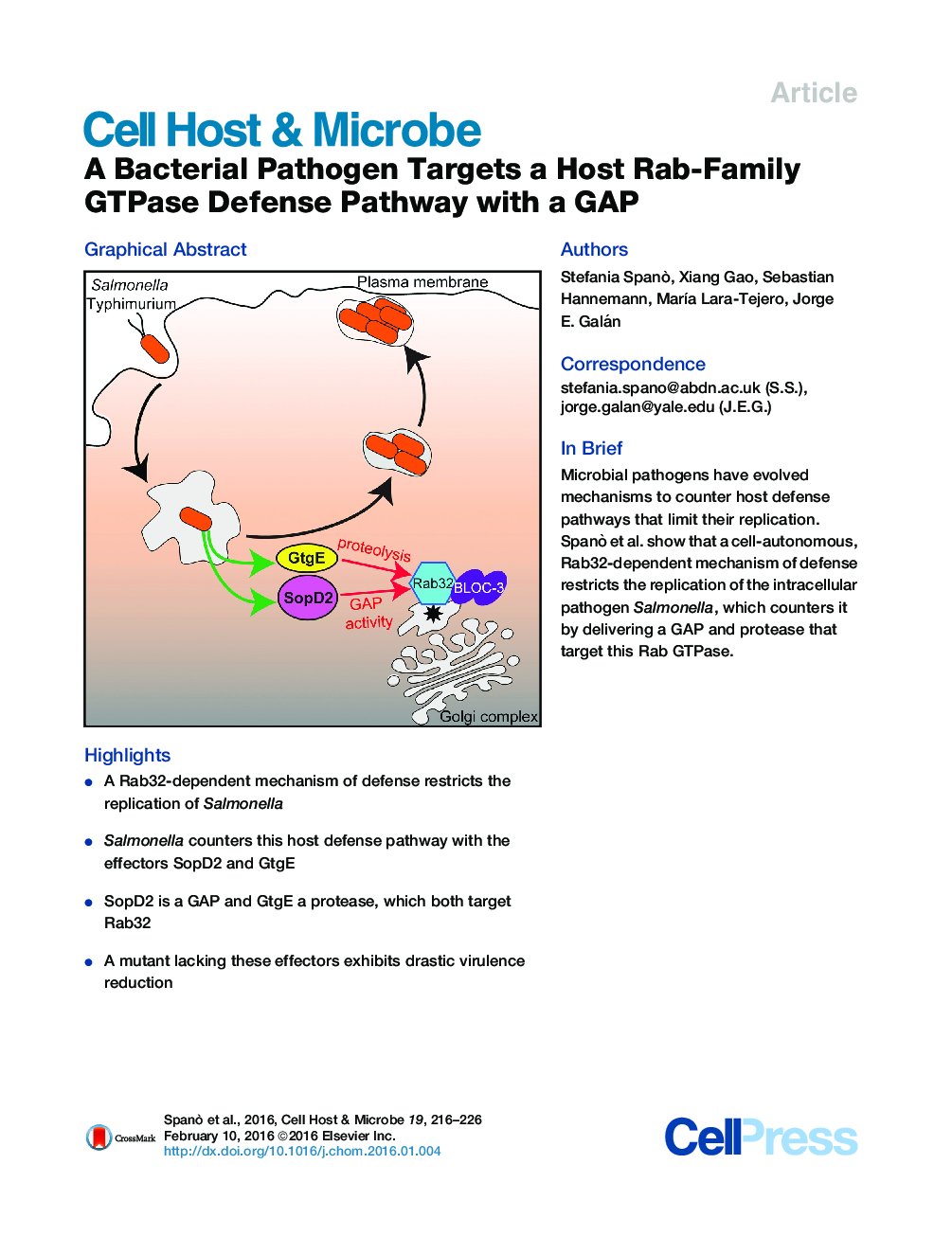| Article ID | Journal | Published Year | Pages | File Type |
|---|---|---|---|---|
| 4360870 | Cell Host & Microbe | 2016 | 11 Pages |
•A Rab32-dependent mechanism of defense restricts the replication of Salmonella•Salmonella counters this host defense pathway with the effectors SopD2 and GtgE•SopD2 is a GAP and GtgE a protease, which both target Rab32•A mutant lacking these effectors exhibits drastic virulence reduction
SummaryCell-autonomous defense mechanisms are potent strategies that protect individual cells against intracellular pathogens. The Rab-family GTPase Rab32 was previously shown to restrict the intracellular human pathogen Salmonella Typhi, but its potential broader role in antimicrobial defense remains unknown. We show that Rab32 represents a general cell-autonomous, antimicrobial defense that is counteracted by two Salmonella effectors. Mice lacking Rab-32 or its nucleotide exchange factor BLOC-3 are permissive to S. Typhi infection and exhibit increased susceptibility to S. Typhimurium. S. Typhimurium counters this defense pathway by delivering two type III secretion effectors, SopD2, a Rab32 GAP, and GtgE, a specific Rab32 protease. An S. Typhimurium mutant strain lacking these two effectors exhibits markedly reduced virulence, which is fully restored in BLOC-3-deficient mice. These results demonstrate that a cell-autonomous, Rab32-dependent host defense pathway plays a central role in the defense against vacuolar pathogens and describe a mechanism evolved by a bacterial pathogen to counter it.
Graphical AbstractFigure optionsDownload full-size imageDownload high-quality image (195 K)Download as PowerPoint slide
